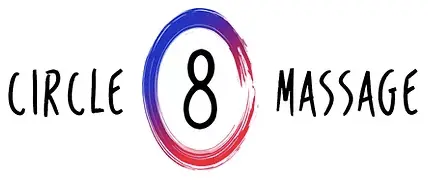Athletes push their bodies to the limit, leading to muscle fatigue, soreness, and the risk of injury. One powerful tool in the arsenal of recovery techniques is sports massage. This article delves into the reasons why sports massage is indispensable for athletes aiming to optimise their performance and well-being.
What is Sports Massage?
Sports massage is a specialised form of massage therapy designed to enhance athletic performance, aid in recovery, and prevent injuries. Unlike traditional massages focused on relaxation, sports massage targets specific muscle groups, employing techniques such as deep tissue massage, stretching, and trigger point therapy.
Relevance and Importance
Recovery plays a pivotal role in an athlete’s ability to perform consistently at their best. Sports massage facilitates the recovery process by promoting blood circulation, reducing muscle tension, and alleviating soreness. Moreover, it can enhance flexibility, range of motion, and overall athletic performance.
Pre-Event Massage
Pre-event sports massage is performed shortly before an athletic competition or intense training session. It aims to prepare the body for exertion by stimulating circulation, loosening muscles, and enhancing mental focus.
Post-Event Massage
Post-event sports massage is administered after physical activity to aid in recovery. It helps reduce muscle soreness, inflammation, and fatigue while promoting relaxation and accelerating the removal of metabolic waste products from the muscles.
Maintenance Massage
Maintenance sports massage is incorporated into an athlete’s regular training regimen to prevent injuries and optimise performance. It focuses on addressing muscular imbalances, preventing the buildup of scar tissue, and promoting overall muscle health.
Muscle Soreness
Intense physical activity can lead to muscle soreness, stiffness, and discomfort. Sports massage can help alleviate these symptoms by increasing blood flow to the affected muscles, flushing out toxins, and promoting relaxation.
Reduced Range of Motion
Overuse or injury can restrict joint mobility and limit range of motion. Sports massage techniques such as stretching and deep tissue massage can help improve flexibility, loosen tight muscles, and restore optimal joint function.
Fatigue and Exhaustion
Athletes often experience fatigue and mental exhaustion due to the demands of training and competition. Sports massage can provide much-needed relaxation, reduce stress levels, and promote a sense of well-being, helping athletes recover both physically and mentally.
Overexertion
Pushing the body beyond its limits through intense training or competition can lead to muscle fatigue, overuse injuries, and decreased performance. Sports massage can help mitigate these risks by enhancing recovery, reducing muscle tension, and preventing injuries.
Poor Recovery Practices
Inadequate rest, improper nutrition, and neglecting recovery strategies can impede an athlete’s ability to recuperate effectively between workouts or events. Sports massage, when integrated into a comprehensive recovery plan, can optimise the body’s ability to recover and adapt to training stimuli.
Muscle Imbalances
Muscular imbalances, where certain muscles are disproportionately stronger or weaker than others, can increase the risk of injury and impair athletic performance. Sports massage can help address these imbalances by releasing tension in tight muscles, restoring proper alignment, and promoting muscular symmetry.
Assessment of Muscle Function
Sports massage therapists often conduct a thorough assessment of an athlete’s muscle function, range of motion, and areas of tension or discomfort. This assessment helps tailor the massage treatment to address specific needs and goals.
Palpation and Manual Therapy
Palpation involves manually assessing the texture, tone, and sensitivity of muscles and soft tissues. Sports massage therapists use palpation techniques to identify areas of tightness, trigger points, and adhesions, guiding the application of massage techniques for optimal results.
Movement Analysis
Observing an athlete’s movement patterns and biomechanics can provide valuable insights into potential areas of dysfunction or injury risk. Sports massage therapists may incorporate movement analysis into their assessment process to inform treatment strategies and corrective exercises.
Deep Tissue Massage
Deep tissue massage targets the deeper layers of muscle and connective tissue, applying sustained pressure to release chronic tension, break up adhesions, and improve blood flow. It can be particularly beneficial for athletes with chronic pain, muscle tightness, or restricted mobility.
Trigger Point Therapy
Trigger points are localised areas of muscle tightness and tenderness that can refer pain to other parts of the body. Trigger point therapy involves applying pressure to these points to release tension, reduce pain, and restore normal muscle function, promoting faster recovery and improved performance.
Preventive Measures
Regular Stretching and Mobility Exercises
Incorporating regular stretching and mobility exercises into your routine can help prevent muscle tightness, improve flexibility, and reduce the risk of injury. Dynamic stretching, foam rolling, and mobility drills can enhance muscle function and performance while minimizing the likelihood of overuse injuries.
Proper Nutrition and Hydration
Maintaining a balanced diet rich in nutrients and staying hydrated are essential for supporting optimal recovery and performance. Adequate protein intake supports muscle repair and growth, while carbohydrates provide energy for training and competition. Hydration is crucial for regulating body temperature, lubricating joints, and facilitating nutrient transport.
Adequate Rest and Recovery
Giving your body sufficient time to rest and recover between workouts or events is essential for preventing overtraining and burnout. Incorporate rest days into your training schedule, prioritise quality sleep, and listen to your body’s signals to avoid pushing yourself too hard.
Conclusion
In conclusion, sports massage offers a myriad of benefits for athletes seeking to recover faster, perform better, and stay injury-free. From reducing muscle tension and soreness to improving flexibility and range of motion, sports massage plays a crucial role in optimising athletic performance and overall well-being. By incorporating sports massage into their recovery routines, athletes can maximise their training gains, mitigate injury risk, and achieve their competitive goals with confidence.







